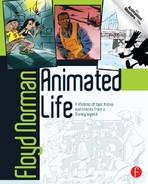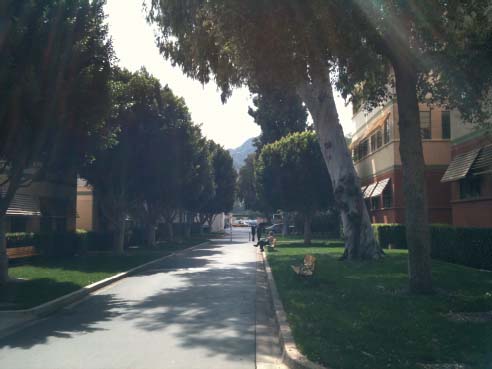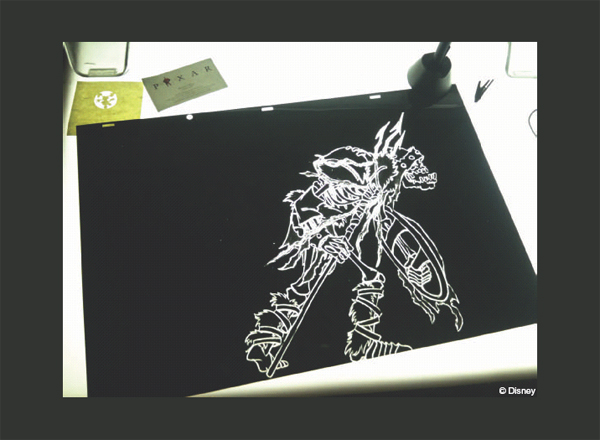10 |
A New Animated Feature
Because of increasing budget concerns, animation had to be reinvented at the Walt Disney Studios.
Technology Reshapes the Cartoon Business
After six long years crafting the animated classic Sleeping Beauty, the Walt Disney Studios found itself at a crossroads. Walt's brother Roy, who oversaw the company's finances, presented an ultimatum to the studio boss: reduce cost, or the future of animation was questionable.
Sleeping Beauty had taken a serious toll on the studio, with its lengthy production schedule and massive staff. Plus, a disappointing opening and the film's failure to make back its cost didn't bode well for the future. The market for Mickey, Donald, and Goofy shorts, once the bread and butter of the company, had dwindled as more and more kids watched cartoons on TV. Disney Animation needed to make some serious changes, and make them soon. Fortunately or unfortunately for all of us, the studio was prepared to do just that. First of all the sizable animation department was reduced to half its size. That still left hundreds of workers in Disney's Ink & Paint department where the acetate sheets called “cels” were inked and painted by hand. However, that department would soon see a change.

THE LEARNING CONTINUES
A quick sketch of the spotted doggie.
Ub Iwerks was well known as Disney's technical wizard. Ub ran the process lab, where the optical work and photographic effects were created. Most of us looked at this Disney facility as a “secret research and development lab” where technicians crafted masterful solutions to the studio's technical challenges. The photocopier had emerged on the scene as an amazing new technology destined to revolutionize business. Could this device revolutionize putting animation drawings onto cels as well? Ub Iwerks decided it could. He deconstructed a Xerox photocopy machine and rebuilt his own. Animation tests were completed and photographed using the new process. When the time was right, the Disney technician screened the results for Walt and it appeared the experiment was successful. Animation cels would no longer be inked by hand. This meant considerable cost savings. Characteristically, Walt Disney gave his approval. “Look into it,” he replied.
WALT DISNEY STUDIOS
The 1960s brought changes and a new technology to Disney Animation.
However, the new Xerox process meant changes for art direction as well. Disney's art directors would have to consider how this new production process affected future motion pictures. The Xerox process lacked the subtlety of hand inking. Characters could no longer be done in “self-line”—meaning that the outline colors of the character were the same colors of the characters—to increase their three-dimensionality. Because the Xerox machines could not yet do color, they would have to go back to a hard black outline, like they had in the 1930s. Could there be a way to incorporate this new process in a film's design? Art director Ken Anderson was convinced that he had a solution. Working with character designer Tom Oreb and color stylist Walt Peregoy, the team crafted an exciting new look that would move animation in an exciting new direction. Inspired by the brilliant work of British cartoonist, Ronald Searle, Disney's new film would feature a more linear design and a richly expressive “thick-thin” outline for the characters. Because the animation drawings were being photographed by the photocopier and not traced by an inker, you could even let the outline be of a rougher, less smooth texture, with some hint of construction lines. In addition, the color palette by Peregoy would be bold and provocative. This motion picture represented a whole new design approach for Disney.
Downstairs in the Animation Department, things were no less revolutionary, as the studio artists struggled to adapt to the new way of producing animation. The sizable crews of the previous feature film were reduced to a handful of animation artists. The animators would more than double their output, and the clean-up process would slowly evolve into something we eventually called “touch up.” The smaller units were clearly faster, cheaper, and more efficient. In almost no time, these new animation units functioned like a well-oiled machine cranking out reams of footage that would have been unimaginable on the previous feature, Sleeping Beauty.
With smaller crews and a greatly compressed production schedule, 101 Dalmatians was completed in a fraction of the time it took to create Sleeping Beauty. That meant a huge cost savings and a new lease on life for Disney's Animation Department.
Looking back on this remarkable film, I'm reminded of the stories I've heard over the years. Many still believe that it was the Xerox process that enabled the creation of multiple spots on the dalmatians. Though the process did allow us to duplicate multiple drawings of the puppies, the spots on the dogs were still drawn by hand. Clever animation assistants worked out a system that allowed them to keep the multiple spots in the right doggie location. 101 Dalmatians was still very much a hand-drawn feature animated film, although the elimination of the venerable Inking Department and the incredibly talented women who traced the drawings would change animation forever.
101 Dalmatians was a turning point at Disney Animation. Though it seems like ancient history today, the film's production represented technology's first impact on the animation process. It changed the way we worked in animation and pushed styling in a bold new direction. Of course, this was only the beginning of the technological shifts in cartoon making. Though digital techniques were still decades away, it was clear that they would one day affect Disney Animation as well.
However, this Disney film also taught us all the importance of remaining flexible and adaptable—open and willing to change and to accept any challenge as an opportunity to become even more inventive and creative. I have little doubt that Walt Disney would have encouraged that.


